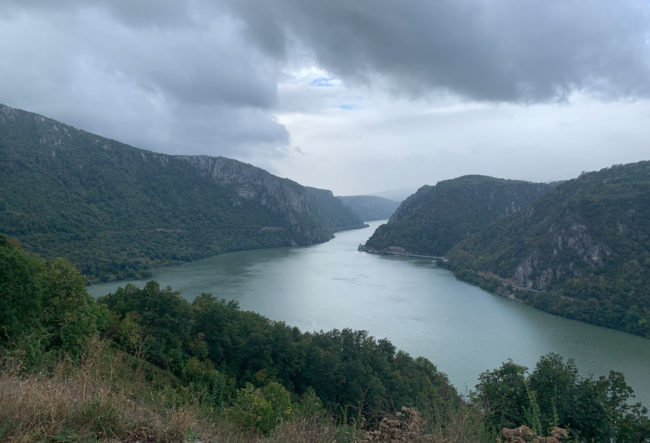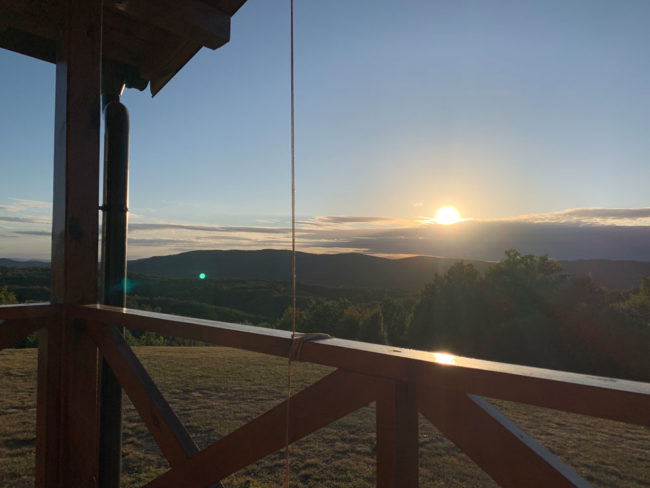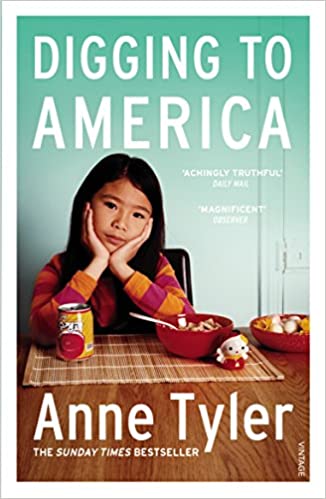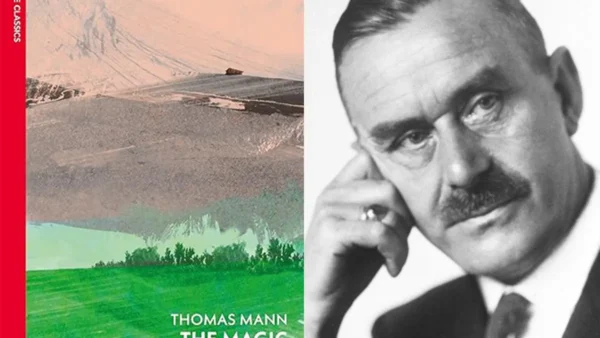In Digging to America, Tyler charts the course of two mismatched families, the hale and hearty, all-American Donaldsons and the quieter, more reticent Iranian-American Yazdans. All they have in common is that they both adopted babies from Korea at the same time, welcoming them on the same flight at Baltimore airport one hot August evening in 1997.
Some books are ideal for a long road trip. I listened to the audiobook version of Digging to America by Anne Tyler as I was driving for six hours across Serbia, from the Bosnian border to the Bulgarian one, trying to escape from the tacky construction site of Zlatibor and find peace in the Stari Planina mountains, the beginning of the Balkan range that stretches through Bulgaria towards the Black Sea and gives the peninsula its name.
This book was the perfect companion for a long drive like that one. Anne Tyler is a consummate storyteller. She introduces you to fairly ordinary characters in fairly ordinary situations, and somehow she makes you care about their parties and arguments, their small desires and fragile relationships.
In Digging to America, Tyler charts the course of two mismatched families, the hale and hearty Donaldsons and the more reticent Iranian-American Yazdans. All they have in common is that they both adopted babies from Korea at the same time, welcoming them on the same flight at Baltimore airport one hot August evening in 1997.
The arrival scene foreshadows much of the later plot development. The Donaldsons are numerous and loud, filling the arrivals hall with their jokes and commentary, their balloons and camcorders, their huge extended family all wearing name badges. They crowd out the Yazdans, who are invisible for most of the scene, just Sami, his wife Ziba and his mother Maryam, quietly awaiting their own arrival.
Predictably, it’s Brad and Bitsy Donaldson who draw the Yazdans into their gregarious world, inviting them over for a leaf-raking party at which Bitsy makes Ziba fret about all her maternal choices. Bitsy uses cloth diapers and feeds her baby organic soy milk. Bitsy stays home and parents full time. Bitsy has kept her baby’s original Korean name of Jin-ho. She manages to make Ziba feel bad about all of her choices (disposable diapers, formula, going out to work, Americanising her baby’s name to Susan), while still coming across as friendly and well-meaning. It sets the dynamic for the two women’s relationship throughout the book.
We follow the two families for six years through their struggles and bereavements, their excruciating annual ‘arrival parties’ that nobody seems to enjoy but that they insist on perpetuating. We watch Jin-ho rebel against her parents’ well-meaning attempts to reinforce her Korean culture, shunning traditional Korean clothes in favour of jeans and insisting on being called ‘Jo’. We see both Jo and Susan rebel against their parents’ determination to make them friends. We track the course of a tentative, awkward relationship between Sami’s mother Maryam and Bitsy’s father Dave.
Nothing much happens, and yet everything happens. It’s not clear who the real protagonists are and what they want. It’s a messier story than that, a story of two intertwined families and how they shape each other while struggling with the problems of parenting and assimilation, illness and ageing and death. It’s about the clash of cultures and how they deal with it. In the end, the focus shifts away from the two Korean babies, and the title “Digging to America” takes on a new, unexpected meaning.
I’d recommend Digging to America for anyone who wants to read a good story, well told, with utterly believable characters and a fair dose of humour. There’s nothing particularly innovative or experimental going on here—it’s a straight chronological story told in simple, plain language—and yet it ends up being more than just a chronicle of family life.
Digging to America, like some of Anne Tyler’s other novels that I’ve read, also offers a sardonic commentary on white middle-class American life. Tyler has a little fun at Brad and Bitsy’s expense, while always ensuring that they are still compelling characters and not mere figures of fun. It’s also a novel about immigration and assimilation, the pain of losing one culture and the difficulty of grasping a new one.
The book made the six-hour drive fly by, and we finished it a few days later on a four-hour drive up to the ‘Iron Gates’, a beautiful region where the Danube narrows to a steep-sided canyon.

It also left me with plenty to think about as I relaxed in a cottage with a view.

Have you read Digging to America? What did you think of it?





There are 8 comments
I haven’t read Tyler in ages. She seems to always be proof that good stories don’t have to be about epic things. Your cabin view is fantastic. I hope you had a lovely stay!
Yep, you’re right – she has a real skill for weaving magical stories out of everyday material. It was a great stay, thanks – so relaxing!
I enjoy Tyler’s books but didn’t find Digging To America quite gripped me. As always the characters are very well portrayed, always with pertinent detail, but somehow the book felt like it meandered without ever coming to much of a conclusion about anything.
Tyler never writes the same book twice – she seems to like to experiment – so it’s probable not every one of her books will please every reader.
Hi Mike, thanks for commenting! I can understand that reaction. The plot was more meandering than in some of her other novels that I’ve read. As I mentioned in my post, I found that the meandering did add up to some conclusions – not overtly stated, but there nonetheless – about immigration, identity, belonging, etc. But as you say, every reader experiences the book differently. Thanks for adding your perspective! Which of her books are your favourites?
I remember reading this one and just thinking “oh, this is fine, it’s good” (and, likely in the back of my mind I was missing the characters from The Accidental Tourist, a story I used to revisit regularly, both on the page and on film). But, then, I finished it at lunch at work and was unexpectedly moved by the last bit of the book, when I realized that somewhere along the line I had become more invested in the characters’ happiness than I understood initially. Since then, I’ve wondered about rereading, to see if I could spot the mechanisms at work, how she subtly ensnared me, but so far I’ve been content to simply know that she did so. (Although reading Ladder of Years recently, I did peer more closely at her craft, hoping to spot some clues.) That sounds like a lovely trip on which to enjoy a good story. Is it not hard to get a driver’s license there when you’re visiting?
Yep, that was my experience too—it kind of crept up on me. It’s quite a skill she has. I’ve never really analysed it too much—I just tend to let the stories wash over me. What did you learn from Ladder of Years?
Incredible views, Andrew, they must have been breathtaking in person!
I love Anne Tyler and have this on my TBR, along with the rest of hers save Dinner at the Homesick Restaurant and her latest, they are the two I’ve read and enjoyed. You’re right about her character writing, she is masterful.
Next time I read one of hers I hope to read The Accidental Tourist, but I will push this one up the list after your review. Do you have any others of Tyler’s that you recommend?
Yep, those views were very beautiful 🙂
As for recommendations, I loved A Spool of Blue Thread and The Amateur Marriage!